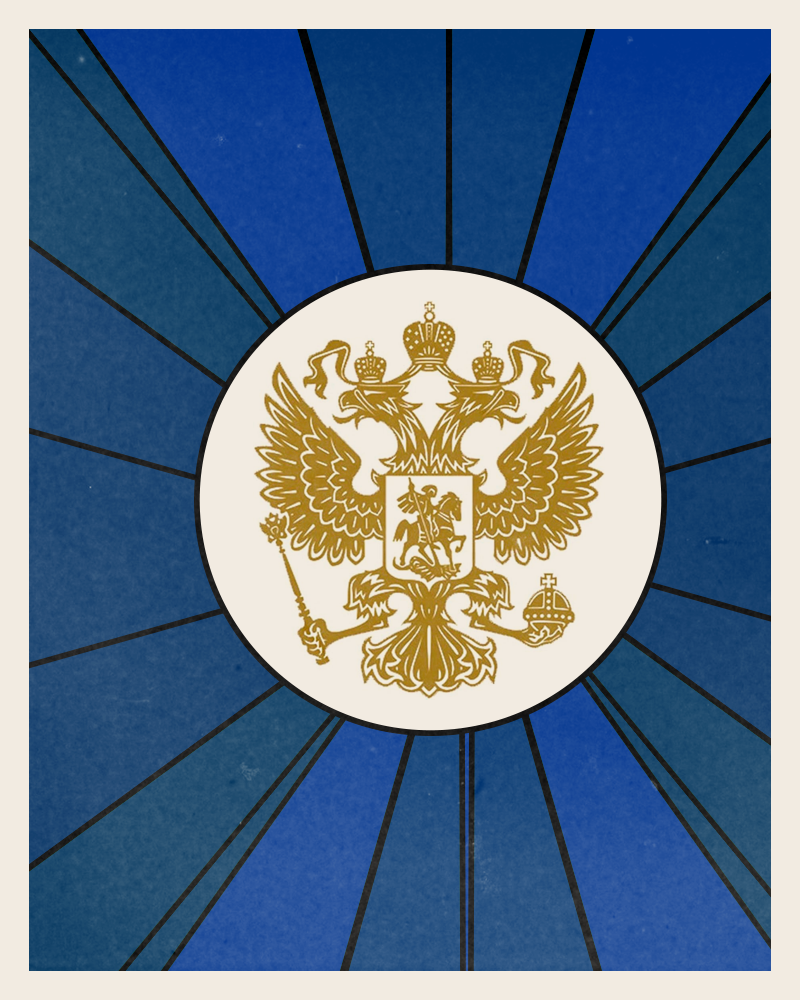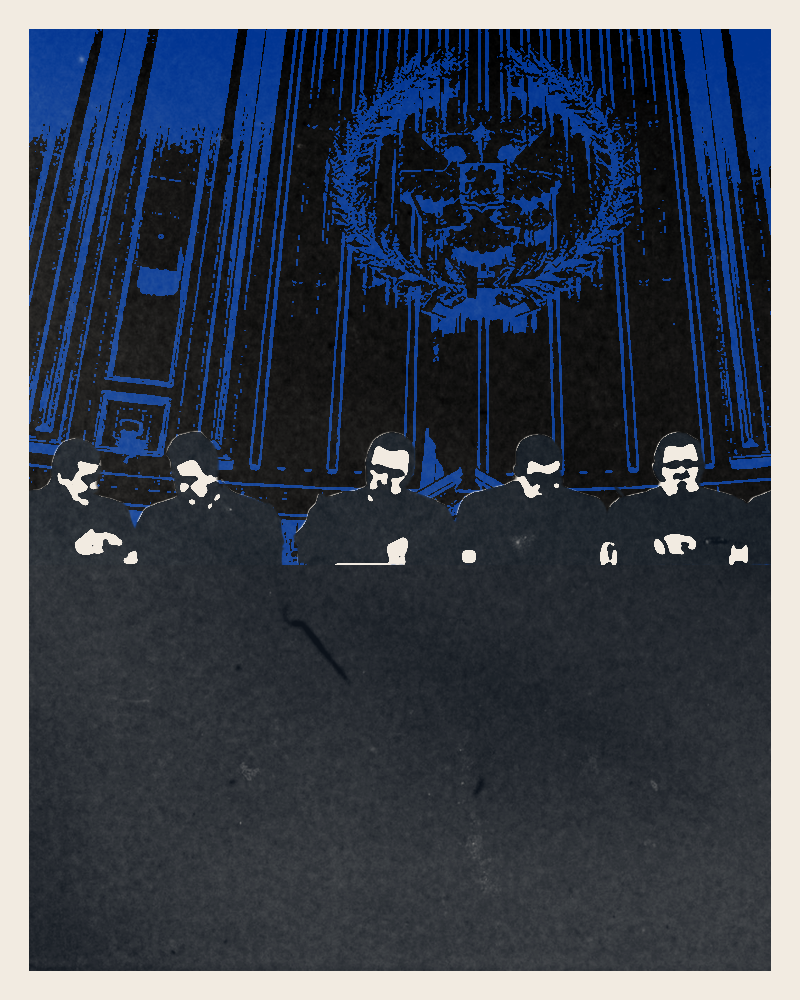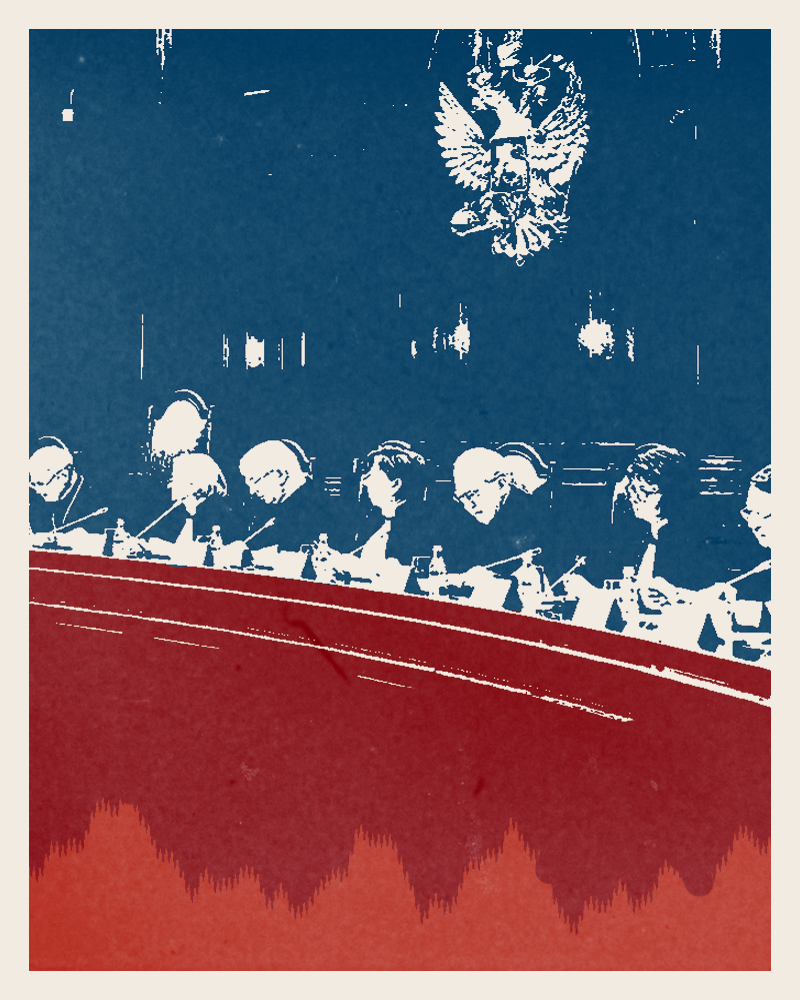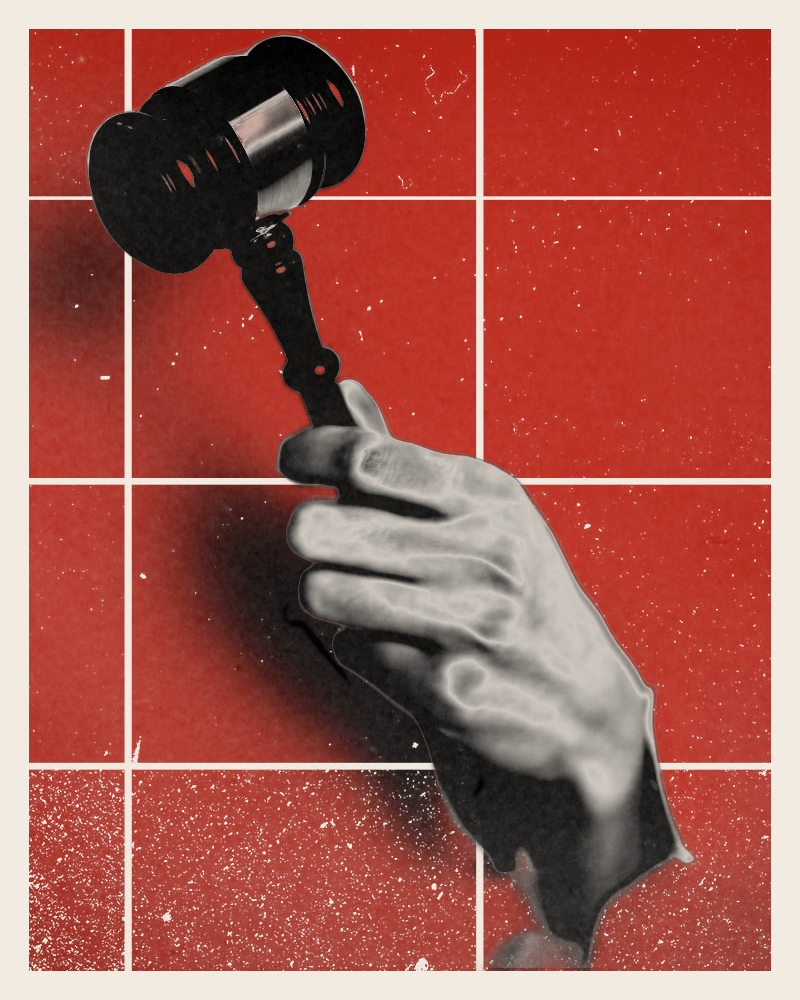The Russian Federation is the largest (geographically) country in the world, with 11 time zones across two continents and coasts on three oceans (the Atlantic, Pacific, and Arctic). While most of the country is ethnic Russia, there are almost 200 ethnic groups, including Tartars, Chechens, Yakuts, and Nenets. Two percent of the population is Small-Numbered Indigenous Peoples who reside mostly in Arctic North and Far East. Russia has a long and complex national and legal history. This profile focuses on Russia’s contemporary justice sector institutions. However the country’s legal system experienced many momentous periods of change. One of the most significant was the sweeping reforms introduced by Tsar Alexander II, first in 1861, with the abolition of serfdom. In 1864 when Russia’s first constitution was promulgated, the nation’s court structure was unified, court proceedings were opened to the public, and jury trials were introduced. The December 1991 collapse of the Soviet Union brought equally historic reforms. A new constitution was introduced in 1993, followed by modernized legal and procedural codes as well as the re-introduction of jury trials.
The Soviet Era
When the Bolsheviks came to power in 1917, they abolished Tsarist-era legal institutions including the legislature, laws, courts, and prosecuting authorities. In the early Soviet era, courts were staffed with party officials and disputes were adjudicated by a judge and two citizens voted into office by local councils. Citizens “of moral integrity” were authorized to serve as prosecutors and defense counsel.
Once the Soviet Union was formed, Soviet leadership developed a judicial system with trial, appellate, and supreme courts in each of the republics, a separate military court system, and the Soviet Supreme Court.
Although the Soviet Supreme Court formally exercised supervision of lower courts across the USSR, it did not review decisions by the supreme courts of the republics. Its authority was limited to issuing binding judicial decisions on Soviet and constitutional law and exercised legislative initiative, the power to make laws. Supreme court justices were assisted by the Court’s Scholarly Consultative Council, a body of law professors and legal experts.

As was the case for all of the republics, Soviet Russia had its own national justice system of Socialist law, a civil law model influenced by Marxist-Leninist ideology.
“[Socialist] Law is the totality of rules of conduct which express the will of the ruling class and are laid down in a legislative manner, along with the rules and practices of communal life which are sanctioned by the power of the state. The application of these rules is backed by the coercive power of the state in order to secure, reinforce, and develop the social relationships and conditions which are agreeable to the interests of the ruling class.”
The Law of the Soviet State, by Andrei Y. Vyshinsky
As was the case for all of the republics, Soviet Russia had its own national justice system based upon the European civil law model, with legal and procedural codes. There was a procuracy to prosecute crime, supervise the implementation of government policy, and maintain social order. The bar included advocates and counsel that handled civil cases; legally trained notaries drafted contracts, wills, and other documents. Judges were selected by the communist party. For criminal matters, an investigating magistrate questioned suspects and witnesses and presented the indictment. Trials were conducted by a single professional judge and two lay judges -- people’s assessors -- chosen from the community to serve ten days a year. The accused had a right to defense counsel and an appeal heard by three professional judges. The courts applied a formalist socialist jurisprudence, applying code provisions without setting forth their reasoning. Comrades Courts, nonprofessional tribunals throughout Russia, resolved petty offenses for residents and works in collective houses, farms, universities, and factories.
Despite this rule of law veneer, through most of Soviet Russia’s history, the state security apparatus operated in parallel to the court system, both carrying out political prosecutions and imprisoning enemies of the state without trial.
Although the Soviet Supreme Court formally exercised supervision of lower courts across the USSR, it did not review decisions by the supreme courts of the republics. Its authority was limited to issuing binding judicial decisions on Soviet and constitutional law and exercised legislative initiative, the power to make laws. Supreme court justices were assisted by the Court’s Scholarly Consultative Council, a body of law professors and legal experts.

As was the case for all of the republics, Soviet Russia had its own national justice system of Socialist law, a civil law model influenced by Marxist-Leninist ideology.
“[Socialist] Law is the totality of rules of conduct which express the will of the ruling class and are laid down in a legislative manner, along with the rules and practices of communal life which are sanctioned by the power of the state. The application of these rules is backed by the coercive power of the state in order to secure, reinforce, and develop the social relationships and conditions which are agreeable to the interests of the ruling class.”
The Law of the Soviet State, by Andrei Y. Vyshinsky
As was the case for all of the republics, Soviet Russia had its own national justice system based upon the European civil law model, with legal and procedural codes. There was a procuracy to prosecute crime, supervise the implementation of government policy, and maintain social order. The bar included advocates and counsel that handled civil cases; legally trained notaries drafted contracts, wills, and other documents. Judges were selected by the communist party. For criminal matters, an investigating magistrate questioned suspects and witnesses and presented the indictment. Trials were conducted by a single professional judge and two lay judges -- people’s assessors -- chosen from the community to serve ten days a year. The accused had a right to defense counsel and an appeal heard by three professional judges. The courts applied a formalist socialist jurisprudence, applying code provisions without setting forth their reasoning. Comrades Courts, nonprofessional tribunals throughout Russia, resolved petty offenses for residents and works in collective houses, farms, universities, and factories.
Despite this rule of law veneer, through most of Soviet Russia’s history, the state security apparatus operated in parallel to the court system, both carrying out political prosecutions and imprisoning enemies of the state without trial.
The Russian Federation

Sources of Law
The modern legal system of the Russian Federation is a code-based, civil law system. In descending order of authority, its main sources of law are the constitution, federal constitutional laws (laws decreed by the parliament as constitutional law), federal laws, presidential decrees, government resolutions and orders, legal acts of authorized state bodies, and regional laws and regulations.
Court System
The court system in Russia has two administrative levels: federal and regional. There are eighty-five ‘subjects’ on the federal level (cities, regions, and other territorial entities), each with their own charter (constitution) and legislation. Twenty-one of these subjects are federal republics, which are administrative divisions that include areas with a non-Russian ethnic majorities; they were created as future nation-states during the early Soviet period.
The Russian Federation

Sources of Law
The modern legal system of the Russian Federation is a code-based, civil law system. In descending order of authority, its main sources of law are the constitution, federal constitutional laws (laws decreed by the parliament as constitutional law), federal laws, presidential decrees, government resolutions and orders, legal acts of authorized state bodies, and regional laws and regulations.
Court System
The court system in Russia has two administrative levels: federal and regional. There are eighty-five ‘subjects’ on the federal level (cities, regions, and other territorial entities), each with their own charter (constitution) and legislation. Twenty-one of these subjects are federal republics, which are administrative divisions that include areas with a non-Russian ethnic majorities; they were created as future nation-states during the early Soviet period.
Russia’s federal courts include the constitutional court, supreme court, courts of general jurisdiction, commercial courts, specialized courts, and military courts. Regional authorities have jurisdiction over magistrate courts (also called Justice of the Peace Courts). There is also a separate system of military courts.
Magistrate Courts
The first instance magistrate courts are local courts administered regionally. They hear criminal cases with a maximum penalty of three years in prison and civil cases involving not more than 50,000 rubles. Most family law matters, property disputes, and administrative law issues are heard by the magistrate courts.
District Courts
Federal regions and city boroughs have their own district courts, sometimes called city courts (as is the case with Moscow City Court). These are courts of first instance for civil and criminal matters not heard by the magistrate court. District courts also hear appeals from the magistrates court.
Regional Courts
Regional courts serve the 85 regions of Russia, federal subjects, and the autonomous oblasts (administrative regions) and okrugs (oblasts for ethnic minorities). Regional courts have first instance jurisdiction over more complex criminal and civil cases, litigation involving state secrets, and cases where the accused has special status, such as being a government figure. They also hear cases on appeal and cassation. These courts have three chambers -- civil, administrative, criminal -- and a presidium which hears cassation cases and undertakes compilation and analysis of court practice.

The Supreme Court (Verkhovny Sud)
The Supreme Court hears cases on appeal and cassation, has administrative authority over the court system, and issues clarifications on matters of judicial practice. The court has first instance jurisdiction over cases involving international treaties, economic disputes between the subjects of the Russian Federation, some administrative matters, electoral questions, political parties and NGOs, and allegations of serious judicial misconduct. The court has 115 members and nine chambers: plenum, presidium, appeals, administrative, civil, criminal, economic, military, discipline. The Plenum insures harmonization of court practice by issuing clarifications on the interpretation and application of law. The Presidium serves a supervisory role over the Russian judiciary, analyzes judicial statistics, and advises the lower courts on legislative interpretation. It also hears cases involving newly discovered evidence. The Scientific Council of the Supreme Court advises the court on issues of judicial practice, drawing upon court data.
The Constitutional Court
The Constitutional Court was moved from Moscow to St. Petersburg in 2008. It is the only court in Russia with the authority to rule on the constitutionality of laws or legal acts. It also hears cases that involve state authorities, disputes between federal and regional bodies, and the implementation of international agreements. Individuals can file complaints with the court alleging constitutional violations that lower courts have declined to address. Federal courts, including the Supreme Court, may request the constitutional court to review the constitutionality of a law or government action. Constitutional court decisions are binding on all courts.
The Court received over 20,000 petitions most years and reviews the merits of approximately ten percent of those cases. All 11 members of the Court work on each case. Most petitions are dismissed for failure to comply with the Law on the Constitutional Court. Petitions are reviewed by the Secretariat, a unit within the Court that has four departments: Correspondence, Private Law, Public Law, and Criminal Justice. The Secretariat has a permanent staff of legal academics and legal administrators with experience in the ordinary courts.

Commercial Courts
During the Soviet era, a system of informal, quasi-arbitration tribunals was created to adjudicate commercial cases. These tribunals evolved into the contemporary commercial courts, retaining the name arbitration courts (arbitrazhniye sudi), despite their role being adjudicatory. The commercial courts hear first instance and appeals for commercial disputes. The Supreme Commercial (Arbitrazh) Court was abolished by a constitutional amendment in 2014. Its jurisdiction was transferred to the Supreme Court.
In 2013, Russia introduced a new specialized intellectual property court with first instance and cassation jurisdiction for disputes involving intellectual property, trademark, and patents. This IP court is administratively part of the commercial courts.
Judicial Selection

Judges of the constitutional and supreme courts are nominated by the President of the Russian Federation, usually upon the recommendation of the chief justice, and appointed by the Council of the Federation (the upper chamber of parliament). Each level of court has slightly different eligibility requirements as to age and years of professional experience ranging from twenty-five years of age with a law degree and at least five years experience for lower court judges, to forty years of age with fifteen years of legal practice for constitutional court judges.
Judicial candidates for the lower courts must pass an exam administered by the Qualification Collegium of Judges and submit a formal application. The Collegium forwards approved applications to the president of the court where there is a vacancy. The court president has discretion to reject the recommendation but a rejection may be overturned by a vote of two-thirds of collegium members. Final nominees are sent to the office of Russia’s president for approval. Although practicing lawyers are eligible to become judges, most judicial appointees to the lower courts first served as court clerks or legal researchers within a judge’s chambers.
There is no formal system of judicial promotions. Judges must apply for higher court positions. Judges in Russia serve until the mandatory retirement age of seventy except for justices of the peace, who serve five-year terms.
Court Proceedings
Civil and criminal trials are semi-adversarial: the parties are represented by advocates and judges remain actively involved in investigating the facts of the case. Civil trials are usually open to the public, unless the case implicates state secrets or private family matters. Parties may petition to close court proceedings if it is necessary to maintain the confidentiality of a commercial or legally sensitive matter. Criminal cases must be open to the public unless classified information will be introduced as evidence. Cases involving treason, espionage, political opponents, or prominent public figures are consistently held behind closed doors.
Judicial Administration
The Judicial Department
The Judicial Department is the judiciary’s administrative agency and operates under the authority of the Supreme Court. It is responsible for human resources, court finances, and general court administration. Judicial Department staff monitors court performance and makes recommendations for improvements. The Director General of the Department is appointed by the Chief Justice of the Supreme Court, with the consent of the Council of Judges.
The Council of Judges
The Council of Judges of the Russian Federation is an elective body of judges representing all levels of the Russian judiciary. The Council has varied responsibilities including appointing judiciary leadership, developing recommendations on court practice, consulting on the budget process, developing and enforcing the code of judicial ethics, and executing disciplinary sanctions. The Council meets at least twice a year and Council members represent the Russian judiciary in international exchanges.
The All-Russia Congress of Judges
The All-Russia Congress of Judges is the rule-making authority for the Russian judiciary. Its membership includes delegate judges from every court across the country. The delegates are elected by the members of their courts. The Congress meets every four years to consider proposed policy changes. It also elects members of the Qualification Collegium of Judges and the Council of Judges.

Threats to Judicial Independence
In recent years the executive branch has exercised growing control over the courts, including pressure on the trial process, judges, and other justice sector institutions. The 2020 amendments to the constitution broadened the president’s authority over the judiciary, including the right to propose the removal of judges, nominate leadership throughout the courts, appoint the prosecutor general and his deputies, and request constitutional review of draft legislation. The amendments also reduced the number of judges on the Constitutional Court from 19 to 11 and removed language in the Court’s charter mandating that cases be decided “self-sufficiently and independently.”
